Are there any questions left?
Contact us and we will answer!
COMMON WASHER PROBLEMS AND HOW TO FIX THEM: A GUIDE BY FASTAID
Dealing with a malfunctioning washer can be frustrating, especially when laundry piles up. FastAid Appliance Repair understands the importance of a properly functioning washer, and we are committed to providing reliable solutions for common washer problems. With our team of expert technicians in Charlotte, NC, you can trust us to diagnose and resolve a variety of washer issues efficiently and effectively.
In this comprehensive guide, we aim to empower homeowners in Charlotte and surrounding areas with the knowledge and tools to troubleshoot and fix common washer problems on their own. We understand that not every issue requires professional intervention, and that's why we provide step-by-step troubleshooting and repair tips. Whether you're dealing with a washer that won't start, an agitator not working, excessive vibrations, drainage problems, or other washer repairs, our guide has you covered.
By following the guidance in this guide, you can save time and money by addressing washer problems yourself whenever possible. However, if you encounter more complex or challenging issues, the FastAid Appliance Repair team is always ready to assist you. We have the expertise and experience to handle any washer repair, ensuring that your appliance operates optimally and reliably.
Common Washer Problems
Don't let common washer problems disrupt your laundry routine. With FastAid Appliance Repair and this comprehensive guide, you can regain control over your laundry experience and keep your washer running smoothly. Let's explore the world of washer troubleshooting and repairs, empowering you to become a savvy homeowner when it comes to maintaining your appliance.
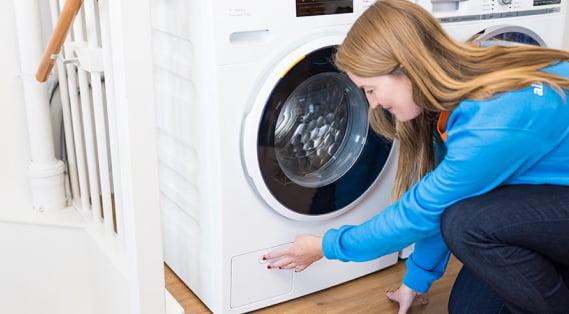
Washer Won't Start
One common washer problem is a unit that refuses to start when you press the start button. We'll delve into potential causes, such as a faulty power supply, door latch issues, or problems with the control panel. Our guide will offer step-by-step instructions on how to troubleshoot and fix these issues, ensuring your washer starts as expected.
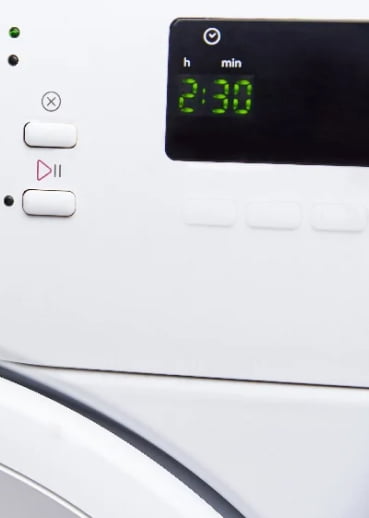
- CCheck Power Supply: Ensure the washer is plugged into a working power outlet and that the power cord is not damaged. Test the outlet using another appliance or a voltage tester to verify its functionality.
- Inspect Door Latch: If your washer has a door latch, ensure it is engaged correctly. A faulty door latch may prevent the washer from starting. Clean the latch and check for visible damage or obstructions.
- Reset the Control Panel: Some washer models have a reset function that can be activated by unplugging the appliance for a few minutes and plugging it back in. This may resolve minor control panel issues.
- Verify Settings and Settings Lock: Check the washer's settings and ensure it is not in a paused or locked mode. Some washers have a settings lock feature that may need to be disabled to start the appliance.
- Seek Professional Help: If you've tried the troubleshooting steps and the washer still won't start, it's best to contact a professional technician to accurately diagnose and fix the problem.
Washer Agitator Not Working
If your washer's agitator is not moving or functioning correctly, it can impact the cleaning performance. We'll explore potential causes, such as a worn-out agitator, malfunctioning agitator dogs, or transmission issues. Our guide will provide troubleshooting tips to help you identify the problem and restore proper agitation to your washer.
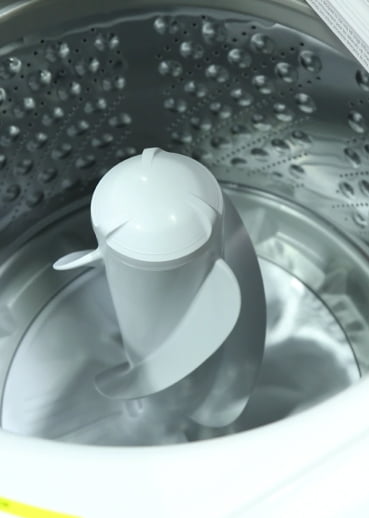
- Inspect Agitator Dogs: Some washers use agitator dogs to move the agitator back and forth. Over time, these dogs can wear out, causing the agitator to malfunction. Replace the agitator dogs to restore proper movement.
- Examine Agitator Belt: If your washer has an agitator belt, check for visible signs of wear or damage. A broken belt can prevent the agitator from moving. Replace the belt if necessary.
- Clean the Agitator: Remove any debris or clothing items that may be obstructing the agitator's movement. Cleaning the agitator and its surroundings can resolve some issues.
- Check Transmission: If the agitator is still not working correctly, the transmission may be at fault. This is a more complex issue and may require professional diagnosis and repair.
- Seek Professional Help: For transmission issues or if you're unsure about performing complex repairs, it's best to seek assistance from a professional technician.
Washer Excessive Vibrations
A washer that vibrates excessively can be noisy and may even move across the floor during the spin cycle. We'll explore potential causes, such as unbalanced loads, uneven feet, or worn-out dampers. Our guide will offer tips on how to troubleshoot and address these issues to reduce washer vibrations.
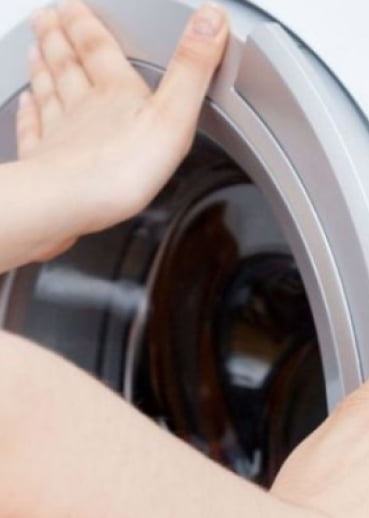
- Load Balancing: Ensure that the laundry load is distributed evenly inside the washer drum. Avoid overloading or underloading the washer. An unbalanced load can cause excessive vibrations.
- Check Washer Leveling: Use a leveling tool to ensure your washer is level on all sides. Adjust the leveling feet as needed to stabilize the appliance.
- Inspect Shock Absorbers: Some washers have shock absorbers or dampers that help reduce vibrations during the spin cycle. Check these components for visible damage or wear. Replace any faulty dampers.
- Avoid Overloading: Follow the washer's capacity guidelines and avoid cramming too many clothes into a single load. Overloading can strain the washer and lead to vibrations.
- Check Floor Stability: If the washer is on a wooden or laminate floor, it may vibrate more than on a concrete floor. Consider using anti-vibration pads to reduce movement.
- Seek Professional Help: If the vibrations persist or you suspect internal problems with the washer, it's best to seek help from a professional technician to accurately diagnose and fix the issue.
Washer Drainage Problems
A washer that won't drain properly can leave your laundry soaked and affect its cleaning efficiency. We'll explore potential causes, such as clogged drain hoses, faulty drain pumps, or drain filter issues. Our guide will provide troubleshooting steps to help you identify the problem and restore proper drainage to your washer.
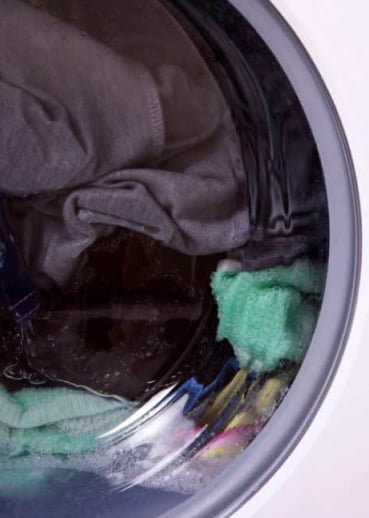
- Check Drain Hoses: Inspect the drain hoses for clogs or kinks. Straighten any kinks and clear any debris or obstructions from the hoses.
- Clean the Drain Pump: Remove the drain pump and inspect it for debris or foreign objects that may be blocking the flow of water. Clean the pump thoroughly before reinstalling it.
- Inspect Drain Filter: Some washers have a drain filter that can become clogged with lint, debris, or foreign objects. Check the filter and clean it as needed to improve drainage.
- Verify Drain Pump Operation: During the spin cycle, listen for the sound of the drain pump running. If the pump is not working, it may need to be replaced.
- Check for Obstructions: Look for any obstructions in the drain pipe or the drain system of your home. Clear any blockages that may be affecting proper drainage.
- Seek Professional Help: If the drainage problem persists or you're uncertain about performing repairs, contact a professional technician for assistance.
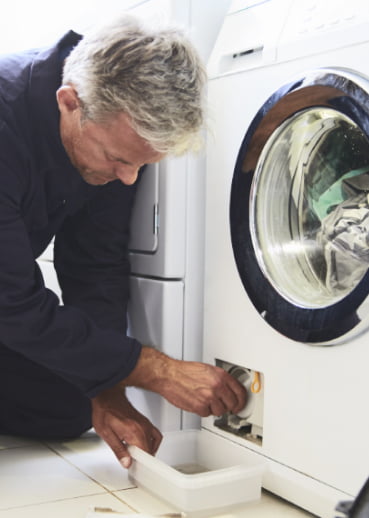
Washer Leaking
Discovering water leakage from your washer can be concerning. We'll explore common culprits, such as a damaged door seal, leaking hoses, or faulty water inlet valves. Our expert tips will guide you through the process of identifying the source of the leak and implementing effective repairs.
- Inspect Door Seal: Check the door seal for visible damage, cracks, or tears. Clean the seal with a mild detergent and warm water to remove debris. Replace a damaged door seal to prevent water leakage.
- Check Hoses: Examine the inlet and drain hoses for leaks, cracks, or loose connections. Tighten any loose connections and replace damaged hoses.
- Verify Water Inlet Valve: The water inlet valve is responsible for supplying water to the washer during the wash cycle. Check for visible leaks or damage. Replace a faulty water inlet valve.
- Examine Drain Pump: A faulty drain pump can cause leaks. Inspect the drain pump for visible damage or leaks. Replace the pump if necessary.
- Seek Professional Help: If you're unsure about identifying or fixing the source of the leak, contact a professional technician for accurate diagnosis and repair.
Washer Unusual Noises
Unusual noises coming from your washer can be annoying and indicate underlying issues. We'll cover common noises like banging, rattling, or grinding sounds and explore their possible origins, such as a loose drum, worn-out bearings, or a malfunctioning motor. Our troubleshooting tips will help you pinpoint the source of the noise and guide you through the necessary repairs.
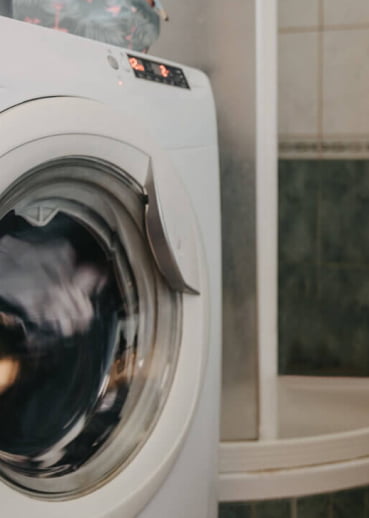
- Identify the Noise: Pay attention to the specific type of noise your washer is making, such as banging, rattling, grinding, or humming. Different noises can indicate different issues, helping you pinpoint the problem.
- Check for Unbalanced Loads: An unbalanced load can cause banging or rattling noises during the spin cycle. Open the washer, redistribute the clothes evenly, and restart the cycle.
- Inspect Shock Absorbers: Some washers have shock absorbers or dampers that help reduce vibrations and noise during operation. Check these components for visible damage or wear. Replace any faulty dampers.
- Examine Drum Bearings: Worn-out drum bearings can cause a loud grinding noise. To inspect them, turn off the power, open the washer door, and manually rotate the drum. If you hear a grinding sound, the bearings may need to be replaced.
- Test the Motor: A malfunctioning motor can produce unusual humming or buzzing sounds. Listen for motor noises during different parts of the wash cycle. If you suspect a faulty motor, seek professional assistance.
- Seek Professional Help: If the noise persists or you're uncertain about its source, contact a professional technician. They can accurately diagnose the problem and provide necessary repairs or guidance.
Washer Overflows
An overflowing washer can lead to a mess and potential water damage. We'll explore potential causes, such as a malfunctioning water inlet valve, faulty pressure switch, or clogged drain hose. Our guide will offer troubleshooting steps to help you identify the problem and prevent future overflows.
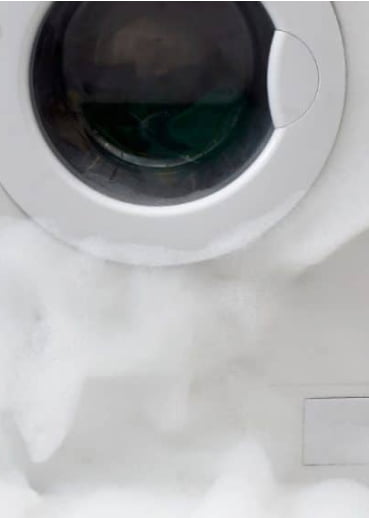
- Inspect Water Inlet Valve: The water inlet valve controls the flow of water into the washer. If the valve is stuck open or not shutting off properly, the washer may overflow. Replace a faulty water inlet valve.
- Check Pressure Switch: The pressure switch senses the water level in the washer. A malfunctioning pressure switch may not signal the washer to stop filling, causing it to overflow. Test the pressure switch and replace if necessary.
- Verify Drain Hose: Ensure the drain hose is positioned correctly and not inserted too far into the standpipe or drain. A clogged or improperly installed drain hose can cause overflows.
- Monitor Water Levels: During the fill cycle, keep an eye on the water level in the washer. If it continues to rise past the normal level, stop the cycle and address the issue.
- Avoid Overloading: Overloading the washer with clothes can lead to overflows. Follow the washer's capacity guidelines to prevent this problem.
- Seek Professional Help: If the washer continues to overflow or you're uncertain about performing repairs, contact a professional technician for assistance.
Other Washer Repairs
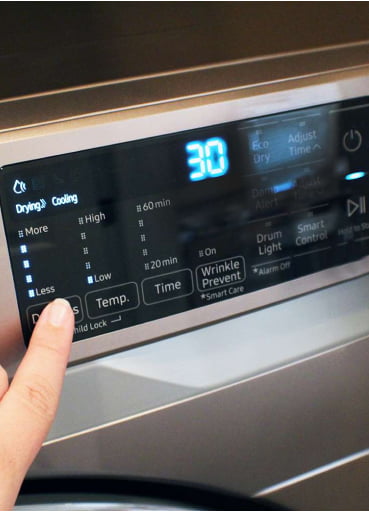
In this section, we'll cover additional washer repairs, such as faulty timers, control panel issues, broken door locks, and dispenser problems. Our expert technicians have the expertise to diagnose and fix various washer components, ensuring your appliance functions optimally.
- Timer Replacement: If the washer's timer is not functioning correctly, it may need to be replaced. The timer controls the different cycles of the washer. Our technicians can accurately diagnose the problem and replace the timer if necessary.
- Control Panel Issues: Problems with the washer's control panel, such as unresponsive buttons or error codes, may indicate a control board malfunction. Our technicians can diagnose the issue and replace the control board if needed.
- Broken Door Lock: A washer door that won't lock properly can prevent the machine from starting. Our technicians can inspect and replace the door lock mechanism to ensure secure closure during operation.
- Dispenser Problems: If the detergent, fabric softener, or bleach dispenser is not working correctly, it may need cleaning or replacement. Our technicians can clean the dispenser or provide a suitable replacement.
Professional Washer Repair in Charlotte, NC
By following the troubleshooting tips and repair techniques provided in this guide, homeowners in Charlotte and surrounding areas can address common washer problems and keep their laundry routines running smoothly. FastAid Appliance Repair is committed to providing expert washer repair services, offering fast and reliable solutions to ensure your washer operates optimally and efficiently.
For professional assistance with washer repairs in Charlotte, NC, contact FastAid Appliance Repair today. Our skilled appliance repair technicians are ready to diagnose and resolve any washer issue you may encounter. Trust us to keep your washer in excellent working condition.
Washer Problems FAQs
A washer that won't drain properly can be caused by various issues, such as clogged drain hoses, a malfunctioning drain pump, or a blocked drain filter. Start by checking the drain hoses for obstructions, cleaning the drain pump, and inspecting the drain filter. If the problem persists, it's best to seek assistance from a professional technician.
The frequency of cleaning your washer's filter depends on usage. It's a good practice to check and clean the filter every few months to prevent clogs and maintain proper drainage. Refer to your washer's user manual for specific instructions on how to access and clean the filter.
Excessive vibrations during the spin cycle can be caused by unbalanced loads, uneven leveling, or worn-out dampers. Make sure to evenly distribute the laundry load inside the drum, level the washer properly, and check and replace any faulty dampers. Additionally, using anti-vibration pads under the washer can help reduce vibrations.
Replacing the washer's door seal can be a challenging task and may require some disassembly of the appliance. If you're experienced with appliance repairs and have the necessary tools, you may attempt it yourself. However, if you're unsure or uncomfortable with this repair, it's best to seek assistance from a professional technician. They can replace the door seal safely and correctly.